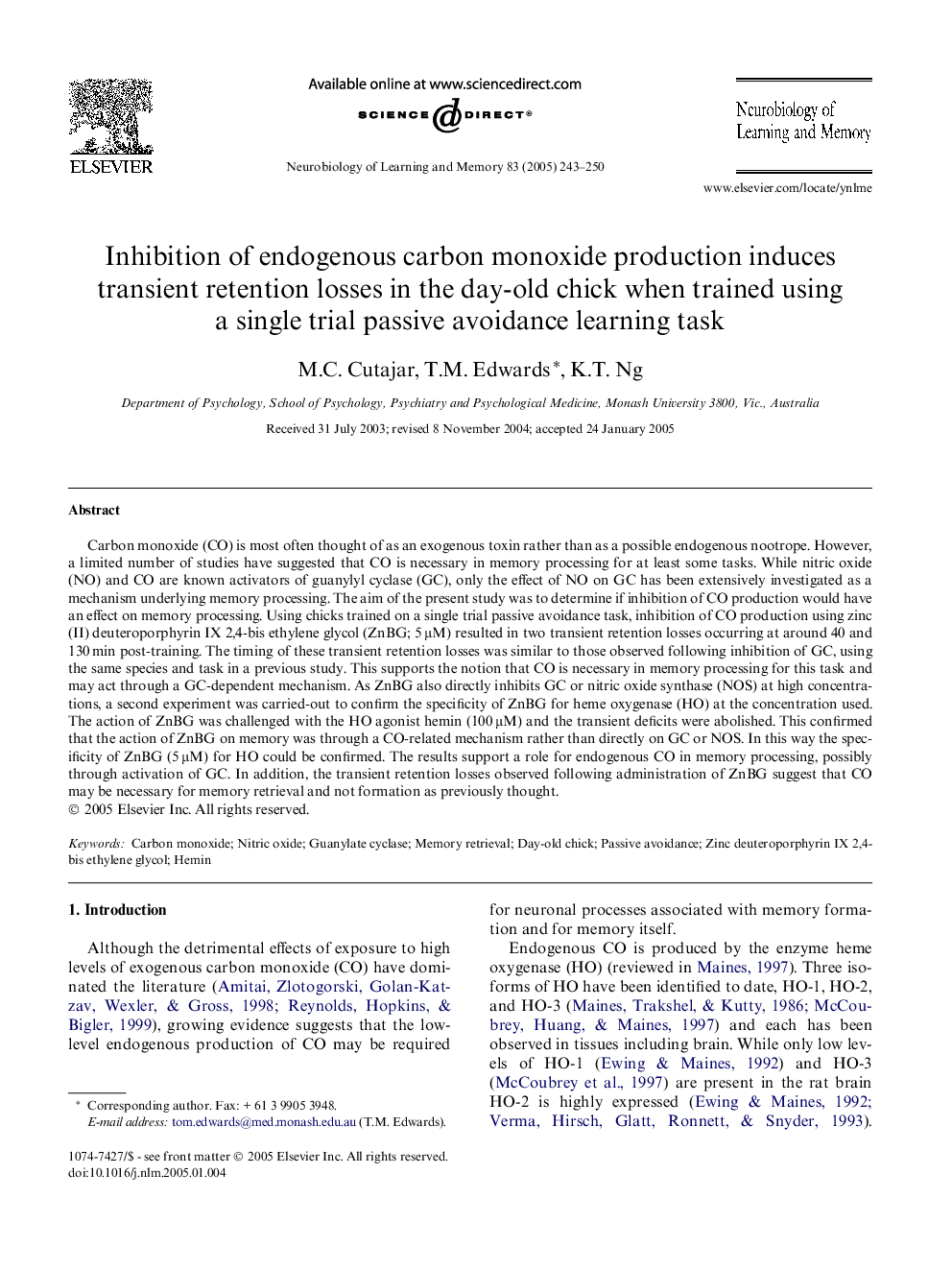| کد مقاله | کد نشریه | سال انتشار | مقاله انگلیسی | نسخه تمام متن |
|---|---|---|---|---|
| 9723274 | 1475234 | 2005 | 8 صفحه PDF | دانلود رایگان |
عنوان انگلیسی مقاله ISI
Inhibition of endogenous carbon monoxide production induces transient retention losses in the day-old chick when trained using a single trial passive avoidance learning task
دانلود مقاله + سفارش ترجمه
دانلود مقاله ISI انگلیسی
رایگان برای ایرانیان
کلمات کلیدی
موضوعات مرتبط
علوم زیستی و بیوفناوری
علم عصب شناسی
علوم اعصاب رفتاری
پیش نمایش صفحه اول مقاله

چکیده انگلیسی
Carbon monoxide (CO) is most often thought of as an exogenous toxin rather than as a possible endogenous nootrope. However, a limited number of studies have suggested that CO is necessary in memory processing for at least some tasks. While nitric oxide (NO) and CO are known activators of guanylyl cyclase (GC), only the effect of NO on GC has been extensively investigated as a mechanism underlying memory processing. The aim of the present study was to determine if inhibition of CO production would have an effect on memory processing. Using chicks trained on a single trial passive avoidance task, inhibition of CO production using zinc (II) deuteroporphyrin IX 2,4-bis ethylene glycol (ZnBG; 5 μM) resulted in two transient retention losses occurring at around 40 and 130 min post-training. The timing of these transient retention losses was similar to those observed following inhibition of GC, using the same species and task in a previous study. This supports the notion that CO is necessary in memory processing for this task and may act through a GC-dependent mechanism. As ZnBG also directly inhibits GC or nitric oxide synthase (NOS) at high concentrations, a second experiment was carried-out to confirm the specificity of ZnBG for heme oxygenase (HO) at the concentration used. The action of ZnBG was challenged with the HO agonist hemin (100 μM) and the transient deficits were abolished. This confirmed that the action of ZnBG on memory was through a CO-related mechanism rather than directly on GC or NOS. In this way the specificity of ZnBG (5 μM) for HO could be confirmed. The results support a role for endogenous CO in memory processing, possibly through activation of GC. In addition, the transient retention losses observed following administration of ZnBG suggest that CO may be necessary for memory retrieval and not formation as previously thought.
ناشر
Database: Elsevier - ScienceDirect (ساینس دایرکت)
Journal: Neurobiology of Learning and Memory - Volume 83, Issue 3, May 2005, Pages 243-250
Journal: Neurobiology of Learning and Memory - Volume 83, Issue 3, May 2005, Pages 243-250
نویسندگان
M.C. Cutajar, T.M. Edwards, K.T. Ng,